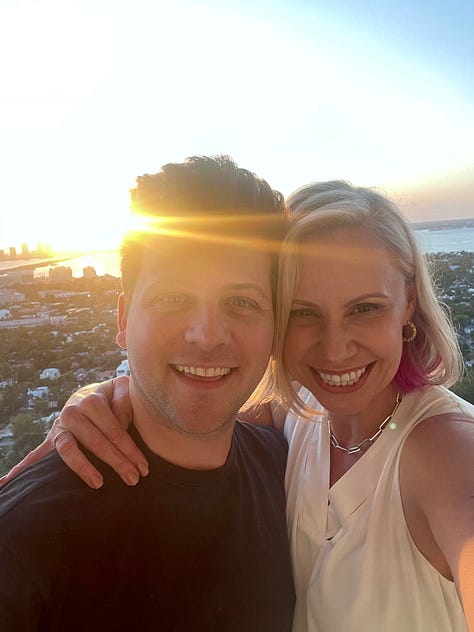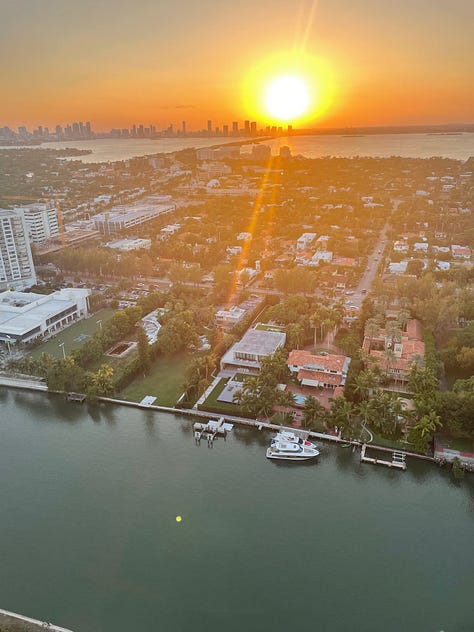Thinking isn't doing
Taking effective action in a culture obsessed with thinking, overthinking, and rationalizing a bit too much.
Sometimes I wonder if we think way too much.
Sometimes I wonder if our thinking is outpacing our feeling and doing.
Sometimes I wonder if our cultural tendency to overthink is replacing real relationships.
I think often and a lot, as I know many of you do too. I have an active mind, which means my thoughts and my thinking take up a large part of my headspace, sometimes at the expense of being mindful, taking in my surroundings, and even holding attention and forming long-term memories. To have an active mind means that the inside usually has more energy and movement than what people see on the outside.
If your mind works like mine, sometimes thinking gets in the way of doing the things we want to do. As a therapist, I’m trained to see patterns. But I’ve been seeing patterns long before my therapy training. I have my active mind to thank for that.
Thoughts vs. Thinking
Let’s consider the difference between thoughts and thinking as a starting place. Here’s the simplified difference:
Thoughts: Brief. Automatic. We don’t choose them. Often referred to as automatic thoughts. Thoughts are sometimes negative, which are usually called Negative Automatic Thoughts (NATs).
Thinking: These are the thoughts we consciously choose or introduce. We use prior experiences, or schemas, to layer on news ways of thinking. Generally speaking, negative prior schemas skew an unhelpful pattern of thinking and belief.
Thoughts and thinking can occur together or separately. Sometimes we also do something called metacognition (thinking about thinking). We also hear about mindset, which is the conscious choosing of a more helpful pattern of thinking.
What are some reasons why we overthink?
The answer is in our evolution (obviously). We developed the ability to think (and overthink!) as our species started to form language, complex forms of communication, develop socially, and collaborate on shared tasks. Thinking enables us to socialize, to connect, to predict future dangers, and to course-correct after we make a mistake. Overthinking is a byproduct of having to predict, amend, hustle, plan, repair, organize, and do things. The main problem I see with overthinking is that we get stuck in the thinking and ideating stage of actioning an outcome.
On a deeper level, it’s a bit of a chicken-and-egg situation. Emotions impact our thinking and our thoughts influence how we feel. This means that emotions and thoughts can both generate their own forms of stress-related overthinking. Fear, anger, and disgust appear to be among the many emotions that drive our tendency to overthink. Fear produces anxiety, worry, and dread. Anger produces rage, frustration, and resentment. And disgust produces shame, judgment, and criticism. All of these emotion families produce a host of thoughts and thinking patterns that keep us trapped in cycles of distress and discomfort.
Feeling these things often leaves us frozen, numb, and stuck.
Try to notice these two patterns occurring inside of you:
When your thoughts influence how you feel.
When your emotions influence how you think.
And note the nuance in language I used in the above two.
~
Emotions feel and thoughts think.
“I want to do it, but I just can’t.”
The patterns of thoughts and emotions described above are some examples of why we may struggle to take effective action. We know we should do differently, but we still feel stuck, lost and confused. This is why knowing differently doesn’t always allow us to act differently; they are separate processes.
To action new outcomes, we can start by asking our unhelpful patterns of thinking to quiet down. From there, we can start to surface the key emotions that are keeping us locked up. There are many ways to do this, and sometimes simply focusing on emotions rather thoughts can be a good starting place.
In order to take effective action, we must do so by addressing the barriers to skill implementation. That’s a fancy way of asking ourselves “what’s getting in my way?” Sometimes it’s our automatic thoughts and sometimes it’s our pattern of thinking. A lot of the times, our strong emotional reaction is an accomplice in our stuckness.
Sometimes the barrier is us
In our culture, we have a habit of taking things personally rather than taking personal accountability. Sometimes the biggest barrier we will overcome is our own limiting beliefs. Of course, there are many outside forces that enact upon us and change the way we think, feel, and relate. I think both can co-occur; environment changes the individual and individuals can change their environment. In any case, if we want things around us to change, something inside of us will inevitably have to change too.
I am not one to blame others for their personal shortcomings. Life is so much more nuanced than that. I do, however, think humans possess incredible skills and have an innate capacity for change and growth. I believe in our ability to pivot in the face of adversity and I believe our nervous systems are naturally flexible, resilient, and capable of holding a lot.
Sometimes thinking and overthinking is our safest option. I want to honour that. Doing something new can be hard and challenging. When something is hard, we tend to overestimate the size of the discomfort it will produce and underestimate our ability to handle it. That’s how thinking gets in our way or holds us back.
Sometimes thinking prevents us from doing.
Sometimes the best plan is to not have one.
Sometimes thinking keeps us right where we are.
Jake
P.S. Stay tuned for Monday’s newsletter, where I will share some tried and true strategies for reducing overthinking.
Something I’m noticing this week:
This week, I flew to Miami Beach to reconnect with a new friend, Katie Read, who I met in Costa Rica two weeks ago. I am not usually this spontaneous, but I was called back to the sunshine to deepen a new relationship and grab life by the reins. Here are some delicious pics that are sure to make my Canadian friends jealous:









